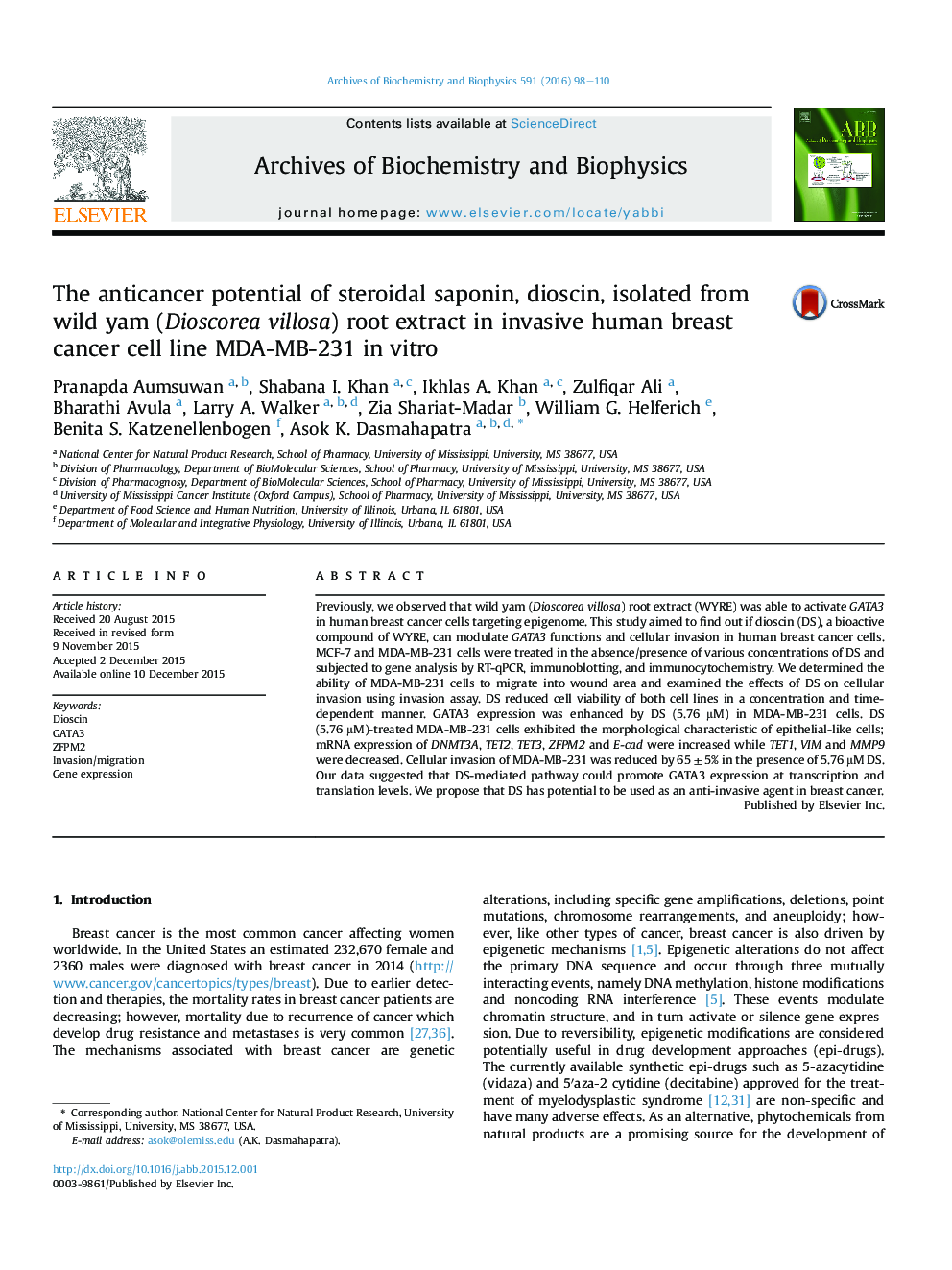| کد مقاله | کد نشریه | سال انتشار | مقاله انگلیسی | نسخه تمام متن |
|---|---|---|---|---|
| 1924814 | 1536312 | 2016 | 13 صفحه PDF | دانلود رایگان |

• Dioscin (DS), reduced cell viability of MCF-7 and MDA-MB-231 cells in a concentration-dependent manner.
• DS induced GATA3, DNMT3A, TET2, TET3 mRNA expression in MDA-MB-231 cells while TET1 was decreased in both cell lines.
• The cell morphology of MDA-MB-231 cells was altered by DS from spindle (mesenchymal) to cuboidal (epithelial) shape.
• GATA3 protein and mRNAs of ZFPM2 and E-cad were increased while VIM and MMP9 were decreased by DS.
• DS was able to inhibit invasion of MDA-MB-231 cells.
Previously, we observed that wild yam (Dioscorea villosa) root extract (WYRE) was able to activate GATA3 in human breast cancer cells targeting epigenome. This study aimed to find out if dioscin (DS), a bioactive compound of WYRE, can modulate GATA3 functions and cellular invasion in human breast cancer cells. MCF-7 and MDA-MB-231 cells were treated in the absence/presence of various concentrations of DS and subjected to gene analysis by RT-qPCR, immunoblotting, and immunocytochemistry. We determined the ability of MDA-MB-231 cells to migrate into wound area and examined the effects of DS on cellular invasion using invasion assay. DS reduced cell viability of both cell lines in a concentration and time-dependent manner. GATA3 expression was enhanced by DS (5.76 μM) in MDA-MB-231 cells. DS (5.76 μM)-treated MDA-MB-231 cells exhibited the morphological characteristic of epithelial-like cells; mRNA expression of DNMT3A, TET2, TET3, ZFPM2 and E-cad were increased while TET1, VIM and MMP9 were decreased. Cellular invasion of MDA-MB-231 was reduced by 65 ± 5% in the presence of 5.76 μM DS. Our data suggested that DS-mediated pathway could promote GATA3 expression at transcription and translation levels. We propose that DS has potential to be used as an anti-invasive agent in breast cancer.
Journal: Archives of Biochemistry and Biophysics - Volume 591, 1 February 2016, Pages 98–110